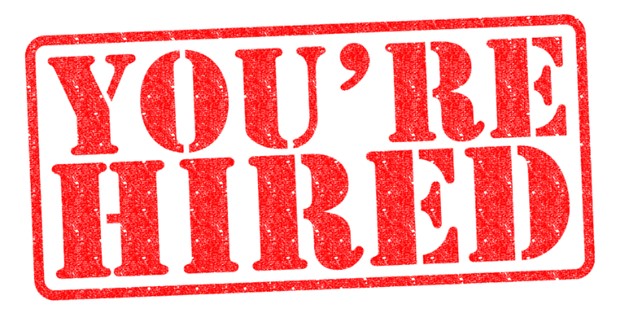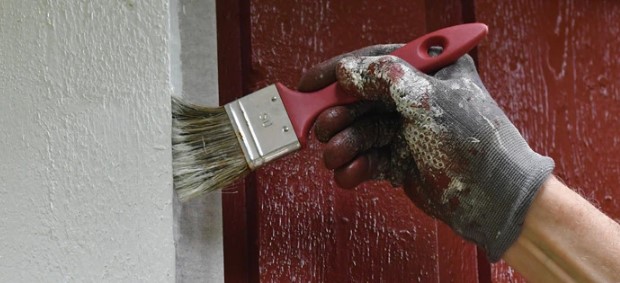2 Tricks for STEALING the Painters You Need This Spring!

I don’t recommend stealing, but when it comes to equipping your painting business with the talent you need that is ready to make money on day one, it’s likely that recruiting away or stealing local talent is your best possible option. Brandon Lewis here with the Academy for Professional Painting Contractors. And in today’s presentation, I’m going to talk about the basics of recruiting, hiring and assessment, very briefly, a very broad overview. And then I’m going to leave you with two practical steps that you could take right now to get the labor you need. Now, recruiting and hiring and assessing painters is likely the most common complaint I hear from owners. Now, everybody’s got different problems. Some folks never contact their past clients and so they’ve got lead generation issues and they don’t have a big volume of referrals. Some folks have an email, a PDF, pet the dog sales process, and their close rates are low and they think that $40 an hour, 45 bucks an hour is as much as they can ever get.
Some people don’t even know how much they’re making during the year. Some people don’t know how much they make on every job because they don’t use production rates or job costing. People have common problems, but not everybody has the same problems. But recruitment is the problem that most everybody has. So let me give you an overview of what you need to do, and then let me give you two specific strategies that will help you steal the labor you need quickly in your market. First off, I can’t cover everything in this video. I have an entire four-hour training that goes through the basics of recruitment, that goes through our referral program that you can use with your painters, getting into the Latino community with completely different strategies, and then how to conduct technical skills assessments that take very little time for both written scope of work assessments and their ability to do brush and paint work and follow instructions and to do simple paperwork. And also doing background checks and assessments for non-technical skills.
Now, I cover all that in a very broad, large training, so I can’t do all that here in a short period of time on YouTube. But I’m going to give you a few things to think about, so take out a pen and piece of paper and write this down. Number one, when most people tell me they’ve got problems with recruiting and hiring, I’ll ask a very simple question. If I look back on your calendar for the last two months, where would I see time set aside for recruiting and interviewing and hiring and assessing, and how much money have you spent on the process? The issue is most people are losing. If you charge 50 bucks an hour, you’re losing about $1,000 per week for every painter you’re down. If you’re down two painters, it’s costing you $2,000 a week, and that’s costing you about $4,800 a month.
That’s about what it comes down to, I think 4,200 now that I think about it. If you’re charging 60 bucks an hour, it’s costing you roughly, what’s that? 30 times four, $1,200 a week, so about $5,200. If you’re charging 70, having one painter down is costing you 35 bucks an hour for every painter that’s down. So most of you, if you’re down a painter, you you’ve got at least probably around a five grand a month problem. If you’re down two painters, you’ve got a 10 grand a month problem. And we know that gross profits past break even are net profits. So the first thing to really think about as it relates to hiring and recruiting is how much money is it costing you? And are you throwing 50 bucks a week at a $1,200 a week problem? Are you throwing 30 minutes at a three hour or four hour a week problem?
What Are You Doing To Recruit Quality Painters?
And so that’s the first thing I would ask you. What are you doing? What are you spending to find the talent you need? And then the second thing I’m going to walk through is the basic overview of recruiting and hiring, and that is market. If you want to write this down, market. Number one, market, put that down. Number two, message. Number three, mediums. And number four, timing. Market, message, medium, timing. So the market that you’re going after that we’re going to be talking about today are professionally employed, trained, skilled painters. Now, there’s a whole world of people out there that like to find folks with zero talent and train them up to be painters. I can’t paint. I’ve never painted, even though I ran a very large, successful painting business, even though I’ve coached 450 painters in six different countries, I can’t paint.
In my opinion, and this is going to get me in trouble, it is the least important aspect of running a painting business. You can make a lot of money running a painting business with zero painting skills. You can have the best painting skills in the world and lose your shirt, because I see it happen all the time. So training them up is not something that I could ever do so I had to steal them. And I teach our members primarily to steal them. A second thing to consider is every paint store has somewhere between 100 and 200 painters attached to it. And that’s not counting Lowe’s and Home Depot and other places people can get paint, like the hardware store. These are just your Benjamin Moore independent retailers, your PPG corporate stores, Sherwin-Williams corporate stores. I mean, that’s about how many are attached. If you’ve got three paint stores in your area, you got somewhere between 300 and 600 painters.
And you need one or two, that’s not a tall order. And I’ve said this over and over again, I’ll say it again. Your job is not to fix the industry’s labor problems or America’s labor problems or Canada or Australia’s labor problems. Your job is to fix your labor problems. Okay? So the first thing is you got to spend time and money on it in a consistent fashion. The second thing is you can’t just blame the painting industry and you can’t just blame the environment for your failures because that’s ridiculous. There are big painting businesses out there, bigger than you, and there are painting businesses your size in your market and there are painting businesses that are smaller. So how in the heck are they making a living? There has to be labor out there, you just got to get it. So the market is professionally employed painters. Well, you’re not going to find professionally employed painters looking for a job because they already have a job.
So your messaging has to be about how you offer better employment. Not employment. You don’t need employment if you have employment. This is an offer of better employment. And there are three reasons that people leave their business: their boss, their pay, and their opportunity to advance. The three main ones. And you need to have good copy, good ads, good messaging. Mediums. You need to be in the job boards, but you also need to be out with flyers, signs, billboards, digital Facebook ads. You need to be in the paint stores. Yard signs, door hangers, magnets, recruitment cards, referral programs. Information out there in the Latino community in Latino newspapers and radio and grocery stores and churches, wherever labor congregates. You cannot throw a dime’s worth of money and effort at a $100 problem. And that’s what so many of you’re doing with recruitment. You’ve really got to throw everything and the kitchen sink at it.
Timing. The best time to have done this would’ve been about two months ago, but most of you are going to wait till the last minute because that’s what painters do. And as long as you’re busy, you don’t tend to focus on solving any problems. You’ll go through a whole season not making any money. I’d rather be slow and broke than busy and broke. But nonetheless, timing. There’s the best time of year to do it but then there’s timing with individual painters. When you ask somebody to come work for you, you’re asking them to take a very big, huge step. And if you treat your recruitment processes and your level of commitment as if it is a casual encounter, as if it is a one night stand instead of a marriage, you are going to fail.
Aside from choosing your spouse, your religion and a few other things, choosing your employer’s right up there. As many bad painters as you’ve had, painters have had just about proportionally, they’ve had proportionally not as many, but proportionally as many bad bosses. Because painting companies are typically ran by tradespeople and tradespeople aren’t always the best bosses. And so you’ve got a big job. Often the person you’re talking to will presently be employed, and then by the time you go through the recruitment process, they are still going to be employed. So your job is to stay in communication with a large number of painters until one of them or a few of them are ready to come work for you and your company. Now, we don’t have time to get into all this, but you also need to have a company that is worth working for.
If you just give people verbal instructions without something like an ultimate crew leader packet. If you don’t train your guys how to interact with the client, how to open up a job, what to do to sequence a job, a little bit, you don’t have to give them a ton of direction. How to close out a job. If you don’t give them tools, if you don’t give them labor hour goals to reach. If you don’t have some kind of saved labor and material bonus program. If you’re not having regular meetings where you recognize the measurements such as meeting budgets and customer satisfaction scores. If you just give people a bunch of verbal instructions and walk away and you have been disappointed time and time again by the painters you hire, it may not be the painters, it may be you. And so it’s important operationally to give people a good place to work as well.
Good Messages, Good Mediums To Attract Painters
So that’s the big overview. The big overview is you got to go after the right market. You got to have the right message, like, “For painters who love to paint but hate their boss,” that’s a good headline. You can steal that. You have to have good messages, good mediums, meaning you’ve got to be everywhere painters are. And you’ve got to interrupt them where they are to encourage them to look at better opportunities. Another good headline might be, “Fast painters earn more here. Learn How.” And that’s where you differentiate your company based upon your bonus program. Because most painting businesses don’t have a bonus program, or if they do, it’s just a random a hundred bucks every once in a while. It’s very arbitrary. There are no set goals, there’s no recognition, there’s no opportunity to advance. And then timing. This is a long term thing. Most people think, “I got to recruit right when I need someone desperately and I can’t recruit before.”
There’s a difference between recruitment and hiring. The phases in the hiring process are lead generation and recruitment. Then you have the retention phase, which is all the communication that goes on between you and the prospective hire. And then you have the assessment phase. And the assessment phase is where you check their technical and non-technical skills. And then you have onboarding. And those are all the things you do initially when someone gets hired to make sure they understand exactly what is required of them and that they understand the metrics by which they will be measured and you introduce them to your company culture. That’s the big picture. Now, “Give me the hack, Brandon. I just want to go straight to the hack. I don’t really want to know the basics and the fundamentals. I don’t want to be good at that. I just need some little trick to solve all my problems.”
Well, for those who think like that, you’ve hung in here for 12 minutes and 26 seconds to get these two tips. Number one, the first tip I’m going to give you is how to speak to painters when you meet them in person. And you need to be in the paint store, never ever to pick up paint because it’s a complete waste of time, but to recruit. You don’t need your painters in the paint store either, because that’s the best place for them to get recruited away from your company. That’s a conversation for another time. So number one, when you walk up to a painter, say these words. “So, how do you owning your own painting business?” In which case they will say either, “I love it,” or, “I hate it,” or, “I’m not the owner.” What you’re trying to do here is figure out if the person you’re speaking with owns their own painting business or if they’re an employee.
If they go, “Oh, I don’t own the painting business,” I go, “Oh really? Well, who do you work for?” “I work for Jim Brown Painting.” “Well, I’ve heard great things about Jim. Is Jim around?” “No, Jim just sent me here to pick up the paint.” “Oh, really? So how do you like working there?” This is the script you use. “Well, I like it.” “I don’t like it.” Whatever. “How long you been doing it? Really? Well, listen, I don’t have time to talk to you a lot today and I know that you’re busy as well. Would it be okay if I took your phone number and if you and I went and had a cup of coffee or grabbed a hamburger?” “Sure.” You get his phone number, you get his name. Now you are completely in charge of the recruitment process. You can harass, harry and stay in front of this person until they are ready to come work for you. You get 20 people’s name on the list, two to five of them are going to come work for you, and one to two of them are going to work out.
It’s about getting the information. It’s about building a list, what I call the black book of painters. So recapping this script, “How do you like owning your own painting business? Well, you don’t? Well, Jim Brown, I’ve heard good things. Is he around?” And then it’s, “Well, how do you like working at your painting business, or the painting business you work at?” And then it’s getting their contact information so you can follow up. Now, many of you got used to the environment around 2008 and 2009 and maybe even to 2010 and ’12 where it was an employer’s market because of the crash. It is not an employer’s market anymore, it’s an employee’s market. So when you go after a painter, you’re really going after somebody who represents 60,000 to $70,000 in personal income.
Most of you would break your back to get a $120,000 paint job, but every time you hire a painter, it’s about like getting a 100,000 to 150,000, maybe even $175,000 paint job. But you don’t put in the same amount of effort from a sales and a persistent standpoint, although you should. So that’s number one. Number two, here’s my second tip. You need to be asking for referrals. You need to be asking for referrals, and here’s how you do it. Every time you interview a painter, you should walk away with two or three referrals.
Here’s how you do it. “Well, Jimmy, I’ve really enjoyed talking to you today. Let me ask you a question. If you could think of a painter that you have worked with in the past who is honest, skilled, someone that you would have work in your own mother’s home and feel completely comfortable with them, who is that person and what type of attributes do they have that make you think that they’re a really good painter or a crew leader?” And they’ll go, “Well, that’s fine. I worked with this guy named Jose, and Jose is one of the best trim guys, and he’s just honest as the day is long and he works real hard.” “Well, who else?” “Then there’s Bob. Bob, I worked with him and Bob was just fantastic. And he’s great. And he’s a little older, but he’s still really fast. He’s super responsible. He runs a crew.” “Where do they work? Really? Do you still stay in touch with them?” “Oh, yeah.” “Do you have their phone numbers?” “Certainly.”
“Well, here at ABC Painting, when we hire people, we like to try to put crews together. Would it be all right if I reached out to them? And I can either say that you recommended that I reach out to them and talk about their careers, or I don’t even have to tell them where I got their name from. I’ll just say, ‘Hey, you came highly recommended and the person didn’t want me to share their name because they didn’t want it to jeopardize their employment.’ I can be super discreet or whatever. Because if you’re going to come work here, I’d rather have people surround you that are of similar character and of similar skill. Because we’ve all worked somewhere where we had a bunch of people working around us that we didn’t like because they weren’t good or they weren’t honest or they weren’t ethical or they didn’t pull their own weight. Can I get that number of Bob and Jose?” “Sure.”
I used to do this every time I interviewed people. And if you get good at it, you can get two or three numbers every time you do an interview. And here’s the kicker. Those numbers you get from the individual you’re interviewing for a referral and the person is typically better than the person you’re interviewing, and here’s why. That individual that you were interviewing had to go through their mental catalog and they had to pull out every painter they’d ever worked with. And they have an evoked set and they go, “This is the guy. This is the guy. They are the best.” That person may not be the best. Now, they’ll tell you they’re the best. But usually when somebody else refers somebody as being awesome, they’re better than the person you’re talking to. So if you do this, theoretically, you could honestly interview one or two or three painters that are decently well-connected and you could just keep getting a list.
And every time you call somebody, you bring them into your office, you get a referral out of them. If you’re really good at getting referrals out of people, it really makes it easier, far more easy to find folks. And then you just pick up the phone and say, “Hey, so-and-so recommended you, said you were one of the best painters in town. Is that true? Now, they said you’re honest as the day is long. They said that you can cut in. Is that true?” And usually most people are very flattered. “Yes, yes.” “Listen, I know you don’t want to go work anywhere other than the company that you’re working at, but I’d love to have a conversation with you about your painting career. I will not try to recruit you away, I promise. Can I come buy you a cup of coffee? Can we eat a hamburger? Can we get together? Where are you working? You’re working over in the East Brainerd area?
“Well, fine. I’ll come over there. Get in the car, I’ll come meet you for lunch. Can’t do it at lunch? What about when you get off work? We’ll go over to the Longhorn Steakhouse, grab something to eat. Just talk about your painting career. I just want to be second in line if you ever decide to make a change.” Work it just like a recruiter would, an army recruiter, a navy recruiter. I mean, you are doing major account sales. You are doing headhunting when you do recruitment. So to recap, spend the money and spend the time. Number two, go after the right market. Have the right message. Use every medium at your disposal. And make sure that you stay in touch with that individual for as long as you need to until they’re ready to come work for you.
This is not a short sales cycle, this is a long sales cycle. Put them on your newsletter list. We have an at-home monthly newsletter that we provide for our members. We recommend that recruits be put on that for mail and email. It’s impressive to them to see a legitimate company communicating with its clients and recognizing its own painters. And it shows a strong reflection of your company culture that you’re that professional.
Do engage people verbally to get their contact information when you see them that are painters. You’ve got to get good at this. And when you’re interviewing people, get referrals. Get referrals. If you do it right, you may only have to recruit a third through traditional methods, but your referrals can be the two thirds that you work off of and those are going to be a better two thirds. All right, guys, if any of this has been confusing, if you’re like, “I don’t want to have to invent a bunch of job ads from scratch. I don’t want to have to invent a bunch of scripts from scratch. I don’t want to have to come up with assessment and hiring strategies from scratch. I don’t have time for it. I’m not good at it. Can you just give me what I need?” The answer’s yes. Email me, brandon@paintersacademy.com, brandon@paintersacademy.com.
Let’s Talk About Recruiting and Hiring
I’d be happy to set up a diagnostic call and talk to you about your systems, including recruiting and hiring. Because we have all that developed. When I first started off in this business, all I really cared about or focused on initially was marketing and sales, because everybody had marketing and sales problems, just terrible at marketing and sales. They never communicated with their clients, didn’t work B2B relationships, didn’t go after large commercial repaint accounts. Well, I fixed the marketing problem. Well, guess what that created immediately? Created operations problems. People were processing lots of work, but the jobs weren’t profitable. So we had to start focusing on job costing, production rates. But guess what? The next problem that is created by being a good coach of marketing and sales and operations, then you have capacity issues, recruitment. I can’t find the painters and crew leaders that I need.
And guess what the next problem is that gets started? I got all these painters, I got more painters than I can manage, and I got more sales appointments than I can manage. Now I need an estimator. I need an office assistant. I need an operations manager. So when you’re a good coach, you cause other problems. And one of the problems that I caused early on for our members were issues with hiring and recruitment. And as I mentioned at this year’s 7th Annual Painting Profits Summit Pre-Day, I went through an entire suite of recruitment and hiring modules, what I call toolkits, for very specific purposes that are very robust, very thorough, very detailed. It’s all done for you stuff with templates and trainings, checklists, manuals, et cetera. If those are the types of things you need, just email me, brandon@paintersacademy.com. I’m happy to give you all this free information, but sometimes you just need some help.
If this has been helpful to you, please do follow us on YouTube. Share this video with a Facebook group. Give us a like, leave a comment. Tell me to go jump in a lake because this advice is terrible and it’ll never work and you know better. Whatever you want to do, that’s perfectly fine with me. Brandon Lewis here with the Academy for Professional Painting Contractors. Hey, it’s almost Easter. So if you see this video before Easter, he has risen. He has risen indeed.
This is a great time to celebrate with your family this weekend. I may even send out an Easter message tomorrow. Because it’s important that during this season we understand that there’s something bigger than just running a painting business and there’s something bigger to life. And so if you ever want to talk about that, feel free to email me, brandon@paintersacademy.com. Love you, mean it. Take care, guys. I’ll see you in the next installment. Go get the painters you need. Get them today.
The 5 Keys for Success in ANY Economy

Discover the key to unlocking the hidden income potential in your painting business.
Hear What Other Members are Saying:

Jim and Lorraine
“Our first campaign reached $60,041.98! That's a huge percentage of our annual sales! You don't pick the peach orchard just one time. Different peaches ripen every day. Thanks for encouraging us to keep after it!”

Eric
“15 requests for quotes and closed and/or completed $23,000 of work and I still have a few more to do. Conservatively this campaign will net $25,000 in found money in the first 45 days! Thanks Brandon!”

Torlando
“This year has been the biggest year of growth for us. We're double where we were last year. I realized the real money in this business is in the marketing of the services - not the doing of the services.”
The 5 Keys for Success in ANY Economy
Discover the key to unlocking the hidden income potential in your painting business.




